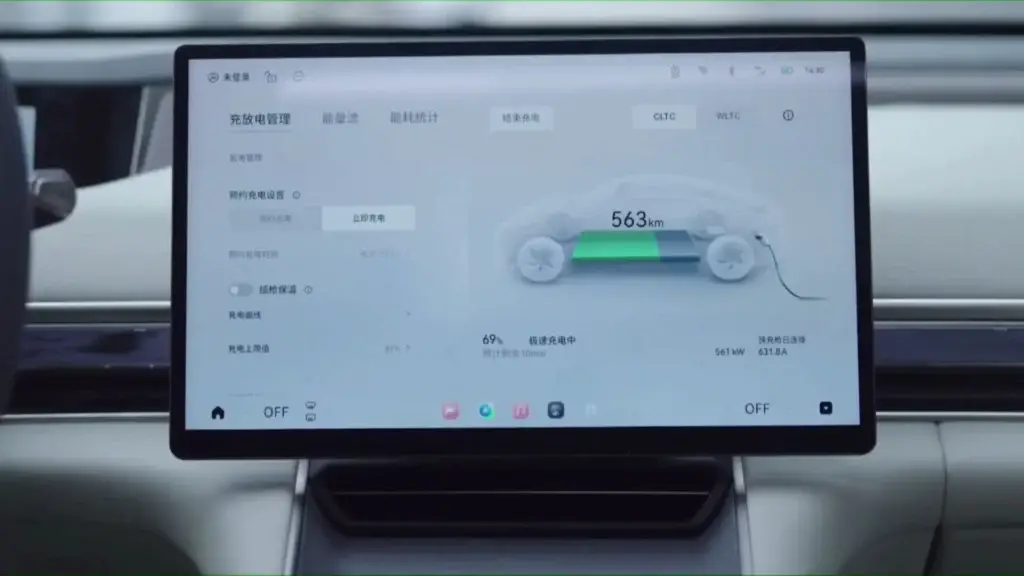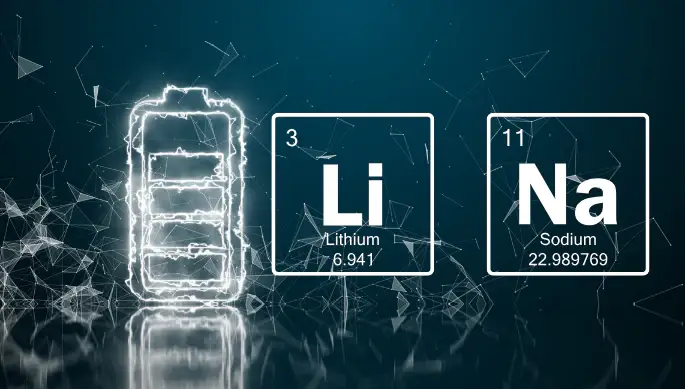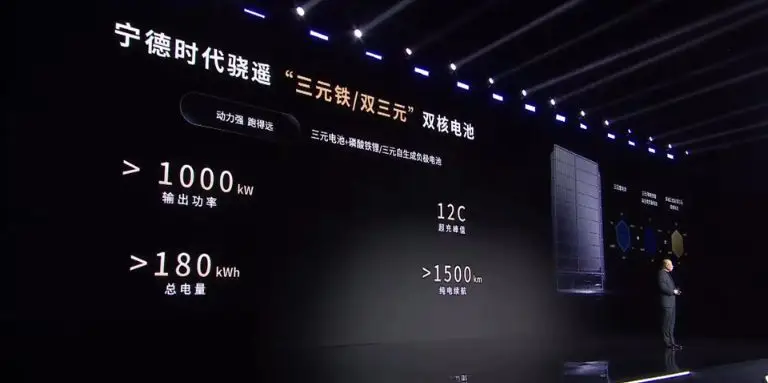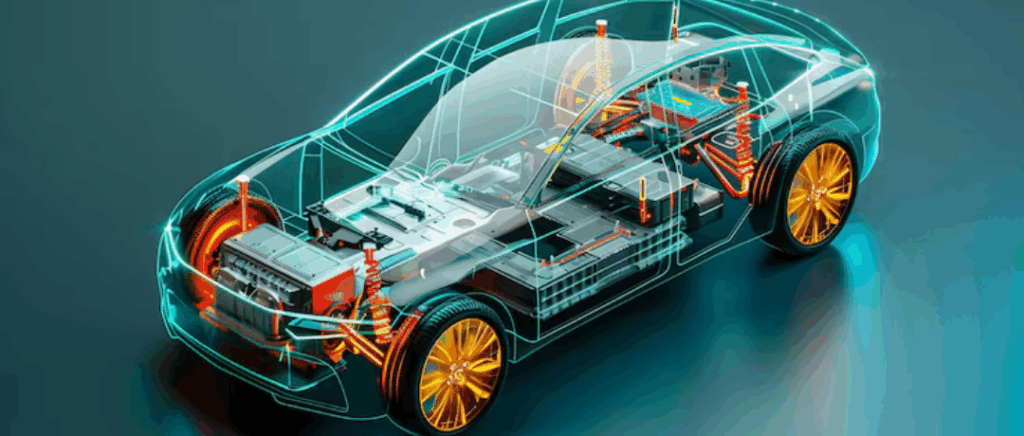Battery CATL sodium-ion: a new era for electric cars?
What is a sodium-ion battery and how does it differ from lithium-ion?
A sodium-ion battery is an electrical accumulator that uses sodium as an ion carrier to store and release energy, in the same way as lithium-ion batteries, which use lithium. The operating principle is similar: during charging, sodium ions migrate from the cathode to the anode through an electrolyte, then make the opposite journey during discharging, generating an electric current. However, there are several major differences between the two technologies.
Sodium is more abundant and less expensive than lithium, making it possible to design batteries at lower cost and with reduced environmental impact. However, sodium has a greater ionic radius and atomic mass, which limits the energy density of sodium-ion batteries: this is generally between 75 and 200 Wh/kg, compared with 180 to 285 Wh/kg for the best lithium-ion batteries.
In addition, the nominal voltage of a sodium-ion cell (2.3 to 3.1 V) is lower than that of a lithium-ion cell (3.2 to 3.7 V), which means less storage capacity for the same weight. Finally, sodium-ion batteries are more thermally stable, safer and more resistant to low temperatures, but their lifespan and performance remain slightly below current lithium-ion standards.
CATL battery: up to 1500 km rangeautonomy for electric cars
CATL has unveiled a major advance with the Freevoy Dual Power battery, capable of propelling an electric car for more than 1,500 km on a single charge. This record range, unprecedented on the market, far exceeds that of current models and means that it can rival or even overtake combustion-powered vehicles on long journeys.
This innovation paves the way for uncompromising electric mobility, where the anxiety of recharging becomes secondary, and where the electric car can become a universal solution, even for long journeys.
How does CATL's sodium-ion technology make it possible to reach 1500 km?
The secret of this exceptional autonomy lies in a dual-core architecture: the Freevoy Dual Power battery combines two independent energy zoneseach optimised for a specific use. One is dedicated to immediate power, the other to long-distance autonomy.
This hybrid design, combining different cell technologies, makes it possible to achieve unprecedented energy density and thermal efficiency. In addition, CATL is preparing to integrate sodium-ion technology, which, thanks to its low cost and high stability, could make these performances accessible to a wider audience, while guaranteeing production that is less dependent on critical raw materials.
What concrete changes will electric vehicles make to their range?
The arrival of this new generation of batteries radically transforms the user experience. With a range of 1,500 km, drivers will be able to plan long journeys without multiple stops.This removes one of the main obstacles to the widespread adoption of electromobility.
For the hybrid models, the technology is already capable of reaching 400 km in pure electric modewhile second-generation sodium-ion batteries will provide up to 500 km of range for 100 % electric models and 200 km for hybrids. This development makes electric cars more versatile and suitable for all types of use.
Express charge: the CATL battery provides 520 km of range in 5 minutes
Ultra-fast recharging made possible by CATL technology

CATL is also breaking new ground in ultra-fast recharging. Its new batteries, including the Shenxing Superfastallows you to 520 km of range in just 5 minutes of chargingwith a maximum power output of 1.3 megawatts. This performance significantly outstrips current standards: by way of comparison, Tesla offers around 320 km in 15 minutes and Mercedes 325 km in 10 minutes. This express recharging capability considerably reduces downtime and brings the electric car experience closer to that of a conventional filling station.
The feat of ultra-fast charging is based on advanced management of cell chemistry and the battery's internal architecture. CATL has optimised material conductivity, heat dissipation and electrode stability to enable extremely high charging currents without compromising battery safety or longevity. This innovation paves the way for a new generation of electric vehicles, capable of combining long range with flexibility of use, while reducing the constraints associated with recharging on long journeys.
CATL sodium-ion battery vs lithium-ion: the technological match-up

CATL's sodium-ion batteries represent a technological breakthrough compared with traditional lithium-ion batteries, thanks in particular to the abundance of sodium, an element 500 times more abundant on Earth than lithium. This abundance means significantly lower production costs and less dependence on critical raw materials. Sodium-ion batteries also offer enhanced safety: they are less flammable, more chemically and thermally stable, and have a much lower risk of thermal runaway.
Their thermal management is particularly efficient, with normal operation possible down to -40°C, making them ideal for cold regions. However, their energy density remains lower: the latest generation of CATLs reaches 160 to 175 Wh/kg, where the best lithium-ion batteries exceed 200 Wh/kg. This means larger batteries for the same range, limiting their appeal for top-of-the-range vehicles or applications where compactness is essential.
Autonomy, cost, ecology: how do these two types of battery compare?
In terms of range, lithium-ion batteries retain the advantage thanks to their higher energy density, making it easier to reach 400 to 600 km, and even more on certain premium models. Sodium-ion batteries, meanwhile, currently offer ranges of 250 to 500 km, depending on the on-board capacity and the generation of the technology. In economic terms, since sodium is more abundant and less expensive to extract, sodium-ion batteries promise to lower the final cost of electric vehicles, making zero-emission mobility more accessible.
Finally, the ecological aspect is to the advantage of sodium-ion: the extraction of sodium is less polluting, recycling is easier, and manufacturing generates less toxic waste. In short, the sodium-ion battery is emerging as a safe, economical and environmentally-friendly alternative, although lithium-ion remains the benchmark for pure performance and energy density.
Which electric cars will adopt the CATL sodium-ion battery?
CATL plans to equip several electric car models with its new sodium-ion batteries from the end of 2025, in particular via the Naxtra cell. This technology will initially be introduced on electric and hybrid vehicles, with a range of up to 500 kilometres announced for 100 % electric models, and around 200 kilometres for hybrids or range-extender vehicles.
Production of these batteries will begin in December 2025following an initial phase dedicated to starter batteries for heavy goods vehicles earlier in the year.
Which brands or models will benefit most from this technology?
CATL is the battery supplier for a large number of manufacturers including Ford Electric, Electric TeslaGeneral Motors, Stellantis, Volkswagen electric, Electric Mercedes, Toyota electricas well as a number of Chinese brands such as Zeekr, NioAvatr, Geely, Li Auto and Chery.
The first models to benefit from sodium-ion batteries will come mainly from these partner manufacturers, with priority given to Chinese brands for a rapid launch on their national market. CATL has already announced that 67 car models will receive the new generation of batteries from the end of the year.This includes both electric and hybrid vehicles.
A battery for everyone or just for the electric car elite?
CATL's strategy is to democratise the sodium-ion battery, initially targeting mass-market models and not just top-of-the-range vehicles. Thanks to lower manufacturing costs and greater stability, this technology is designed to make electric mobility more accessible, particularly in the entry and mid-range segments.
However, the first deployments will mainly concern the Asian markets and partner manufacturers that are most advanced in integrating new technologies. Ultimately, CATL aims to make the sodium-ion battery a standard for the entire electric vehicle market, rather than an exclusive preserve for an elite few.
CATL batteries: what impact on the future of the electric car market?
The arrival of CATL's sodium-ion batteries, combined with innovations such as dual-battery hybrid systems, is redefining the prospects for the electric car market.
CATL, already a supplier to most of the world's major vehicle manufacturers, is now offering solutions that free it from the supply constraints associated with lithium and cobaltThese advances should accelerate the democratisation of the electric car, making the technology more reliable and better suited to a variety of markets, particularly in cold or fast-growing regions. These advances should accelerate the democratisation of the electric car, making the technology more reliable and better suited to a variety of markets, particularly in cold or fast-growing regions.
A revolution that could bring down the price of electric cars?
CATL's sodium-ion technology promises a significant reduction in production costs, thanks to the use of raw materials that are more abundant and cheaper than lithium. According to recent estimates, CATL already offers batteries at prices well below those of its competitors, with a cost per kWh as low as 66 dollars for automotive batteries, and even 56 dollars for stationary storage.
This price war, waged in particular against other Chinese players such as BYD, should result in a fall in the final price of electric cars, making electromobility more accessible to a wider public. CATL could upset the balance of the market by forcing its competitors to match its prices.
How are competitors reacting to CATL's breakthrough?
Faced with the domination of CATL, which holds more than 45 % of the world market for batteries for electric carscompetitors are getting organised. Some, like BYD electric and France's Tiamat, are stepping up their own sodium-ion battery projects to keep pace.
Others are relying on alternative innovations, such as solid state batteries, or strategic alliances to secure their supply and lower their costs. CATL's pressure on prices has already led some manufacturers to negotiate discounts or explore new partnerships with other suppliers, in the hope of remaining competitive in a rapidly changing market.
Conclusion: Technical comparison Sodium-Ion CATL vs Lithium-Ion batteries
| Features | Sodium-ion battery (CATL) | Lithium-Ion battery (Standard) |
|---|---|---|
| Materials | Sodium (abundant, 500x more than lithium) | Lithium (less abundant, extraction potentially problematic) |
| Cost | Potentially lower (cheaper raw materials); Target: 66$/kWh automotive | Generally higher |
| Energy density | Lower (160-175 Wh/kg, CATL) | Superior (180-285 Wh/kg for the best) |
| Autonomy | Up to 500 km (electric), 200 km (hybrid); Freevoy Dual Power battery: 1500km | Variable (depending on capacity and vehicle) |
| Refill | Ultra-fast: 520 km in 5 minutes (Shenxing Superfast) | Variable (Tesla: 320 km in 15 min; Mercedes: 325 km in 10 min) |
| Security | Superior (less flammable, thermally stable down to -40°C) | Crucial thermal management (risk of runaway) |
| Environmental impact | Lower (less polluting extraction, easier recycling) | Potentially higher (extraction, recycling) |
| Availability | Production scheduled for late 2025 (Naxtra cell) | Currently the market leader |
| Manufacturers targeted | Ford, Tesla, GM, Stellantis, Volkswagen, Mercedes, Toyota, Zeekr, Nio, Avatr, Geely, Li Auto, Chery (priority Chinese brands); 67 models by the end of 2025 | Wide range of products |
| Market positioning | Democratisation (consumer models) | Superior performance and range (top-of-the-range vehicles) |
| Competitors | BYD, Tiamat (Na-ion development); companies focusing on solid batteries | CATL is a competitor |
































